Star Crusade Review
Pros: 400+ cards to collect, 6 factions with unique cards, modules and energy system add extra strategy without too much complexity, graphics and animations
Cons: Players can only attempt Raid once before they have to pay credits or cash
Star Crusade just recently went into open early access, a free to play sci-fi themed card game from developers ZiMAD Inc, the game is a fairly traditional and familiar CCG with a few twists up its sleeve and so we gave it a couple of hours playtime to check it out and see where we felt it sat in the TCG/CCG genre.
The core gameplay is very familiar, so much so that our initial gut feeling was just how similar the game felt to Hearthstone; it had a more casual and simplified style with players having the same resource spend mechanic as we saw in HS where you automatically increase your resource allowance by one each turn and with that can play cards that you’ve drawn from your built deck. Cards too have the same mechanics; an attack value, a hitpoint value and a resource cost, with most of them having a particular trait that allows them to do something like attack twice, attack as soon as it is placed, force players to attack that card before attacking others. Whether from Hearthstone or other CCGs/TCGs a lot of the card types are very familiar, so is it just Hearthstone in space?
No, not really.
Whilst the fundamental gameplay is very similar, you could say the same about a lot of other earlier TCGs that came before Hearthstone, the genre changes and changes and pretty soon it’s a bunch of titles all sharing one mechanic or another but with their own special nuances. So what was that for Star Crusade?
First of all we were intrigued with how the deck building works, not that it’s particularly different from any other CCG and you can have a minimum of 25 cards or a maximum of 40, this in itself isn’t that unique or that interesting, however the number of cards you have in your deck is exactly proportionate to your Commander’s number of hitpoints. A little more intriguing, right? Killing off the Commander, as expected, is the ultimate objective and so a Commander with 40 hitpoints is pretty hard to kill, however this means having 40 cards in your deck with a higher randomness of which cards you will draw into your hand each turn. Having 25 hitpoints means theoretically being easier to kill, but having a lot fewer cards you can hone your kill strategy a lot easier, you can get the cards you need in your hands earlier to make combos, it makes rush decks a lot easier to compile and also players have the added bonus of the fewer cards in your deck overall the more you draw into your starting hand. This mechanic alone adds a wealth of options and strategy to each player.
The factions, as you would expect, provide unique cards that are based around different themes and playstyles; the Annunaki for example have a lot of units that help build up psychic shields around their Commander so that damaging them isn’t as easy, whereas the Terrans (who we played as primarily) focus more on having big ships, lots of damage and the ability to stack Firepower for their allies. What is also interesting is that unlike most games where a Commander/Hero/Champion has a unique skill that they can use each turn (usually costing two resources), in Star Crusade these are modules and you can choose which ones you would like (albeit like cards they are faction specific); furthermore you can actually have three of them equipped at the same time.
Now the modules are pretty hard to find from what we could see, at least in the early ranks as near everyone we played only had 1 of them, with the exception of two games. One person had two Modules and it was the longest game we had played, we got extremely lucky with some of our cards and in a normal match would have probably dominated, but his two Modules definitely favoured him and got him out of a jam plenty of times. The other person had all three modules and it was the shortest game we had played, it felt like there was literally nothing we could do as their faction (Heirarchy) focused on healing their units, nerfing ours, and generally just making the game a one sided ass kicking until we shrugged it off and conceded. How we got matched against this person we’re unsure, but they’d either been very lucky in the handful of card booster packs they’d have managed to open at our level (if equal MMR/rank), or they’d already dropped a lot of money to have a pretty pimping deck.
Another mechanic which we really enjoyed, but hadn’t initially worked out how to use, was the secondary Energy system. Whilst you get resources to spend to place Unit cards or Tactics cards (essentially Spells) you also built up Energy for your Commander, which some cards had a special trait to use it to perform some additional function. Our favourite example of this (after it had been used on us to great success) was the Sniper card which allows you to deal one point of damage to any target when the Sniper unit enters the battlefield, however when playing it you also get the option to play it and spend 6 energy to return it to your hand after it has dealt its one damage almost turning it into a repeatable Tactics card. We played against a guy that did a pretty good job of whittling down our units with it, however we had a great play of our own when going up against an Annunaki player.
At one point later in the battle (that in fairness we’d already been winning, but he was starting to make a comeback) our opponent played a card that dropped five 0/1 (0 damage, 1 hitpoint) units automatically onto the battlefield each of which had the “Screen” trait where we couldn’t attack any other units or the enemy Commander until they were destroyed. With five of them this was effectively going to tie up our own units who would have to deal with them before they could deal damage, a great stall tactic whilst our opponent put more powerful cards out on the battlefield and recovered part of his loss. Unfortunately for him we had the sniper in hand, with ten resources available and over 30 energy built up we could play the Sniper and return him to our deck five times, enough to bring him out and deal one damage to each Screen unit one after the other leaving our big tough units on the battlefield to finish off the Commander. It was a great moment.
The games themselves are extremely fun and the graphics and animations are particularly well polished, we managed to have a single go at the Raid, which is Star Crusades draft mode (building a new deck from scratch and having to pick one of three random cards in series until you have a full deck) and then fighting to try and conquer planets and earn rewards. We didn’t do very well and it would cost 100credits to have another go, unfortunately that’s the same price as a booster pack so the feature is really only for players who already have a pretty healthy deck and want to unlock some improved rewards.
The game was extremely fun and other than our fight against the three Modules player it always felt like our own strategy was the deciding factor over what faction we were paired against or whether we got a bad hand at the initial draw. Whilst there are definitely similarities with the game and other CCGs, especially Hearthstone, we’ll honestly say that the additions Star Crusade have added with modules, Energy and Deck/Commander Hitpoints mechanic definitely adds a new level to the tactical gameplay that is going to step this casual CCG up a notch. For a free to play title that is on open early access then anyone who likes their TCGs/CCGs should most definitely give it a try.

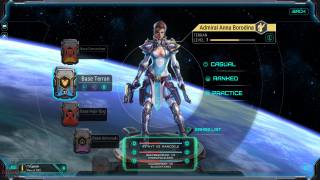
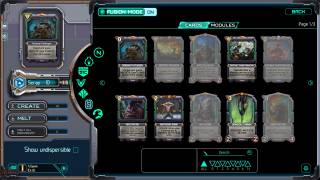
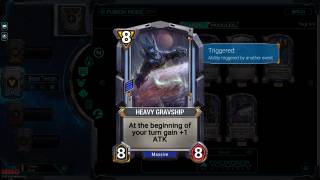
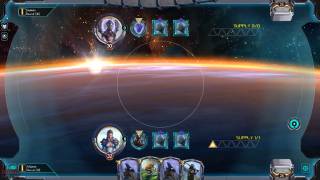
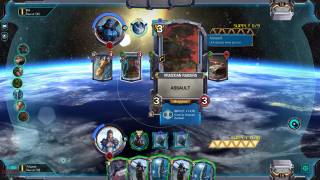
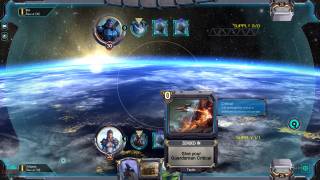
Deja tu comentario
You must be logged in to post a comment.